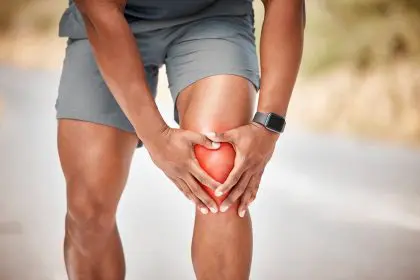Arthritis affects over 54 million adults, making it one of the most common causes of disability and chronic pain. This degenerative condition gradually destroys joint cartilage, leading to stiffness, swelling, and debilitating pain that can dramatically impact daily activities and quality of life.
The hands and fingers often bear the brunt of arthritis development, as these joints endure constant use throughout daily activities while receiving relatively little attention in terms of preventive care. However, simple finger exercises performed regularly can significantly reduce arthritis risk by maintaining joint mobility, strengthening supporting muscles, and promoting healthy circulation to delicate joint tissues.
Understanding how these exercises work to prevent arthritis provides valuable insight into taking control of joint health before problems develop. The key lies in consistent, gentle movements that address the multiple factors contributing to arthritis development while supporting the body’s natural joint maintenance mechanisms.
Understanding arthritis development in the fingers
Arthritis develops through a complex process involving cartilage breakdown, inflammation, and changes in the joint structures that support smooth movement. Cartilage serves as a cushioning material between bones, allowing joints to move freely without friction or pain.
When cartilage begins to deteriorate, bones can rub against each other, causing inflammation, pain, and further joint damage. This process often starts gradually with minor stiffness or occasional discomfort but can progress to severe pain and significant mobility limitations if left unchecked.
The finger joints are particularly susceptible to arthritis due to their frequent use and relatively small size. These joints rely heavily on surrounding muscles, tendons, and ligaments for stability and support, making strengthening and mobility exercises especially important for long-term joint health.
The science behind exercise and joint protection
Regular finger exercises work through multiple mechanisms to prevent arthritis development and maintain healthy joint function. Movement stimulates the production of synovial fluid, which lubricates joints and provides nutrients to cartilage tissue that lacks its own blood supply.
Exercise also promotes healthy circulation to joint structures, ensuring adequate delivery of oxygen and nutrients while removing waste products that can contribute to inflammation and tissue damage. This enhanced circulation supports the body’s natural repair processes and helps maintain optimal joint health.
Strengthening exercises for the muscles surrounding finger joints provide crucial support that reduces stress on cartilage and other joint structures. Stronger muscles help absorb forces that would otherwise be transmitted directly to vulnerable joint tissues, providing protective benefits that accumulate over time.
Eight essential finger exercises for arthritis prevention
1. Finger stretching and flexion
Basic finger stretching involves slowly extending fingers as far as comfortable, then making a gentle fist to flex all joints through their full range of motion. This fundamental exercise maintains joint mobility while promoting synovial fluid production that keeps joints lubricated and healthy.
The stretching motion helps prevent joint stiffness that can contribute to arthritis development while maintaining the flexibility needed for daily activities. Regular practice of this exercise helps preserve range of motion and prevents the gradual loss of mobility that often precedes arthritis symptoms.
Perform this exercise by extending all fingers straight out, holding for five seconds, then slowly curling fingers into a gentle fist. Hold the fist position for five seconds before extending fingers again. Repeat this cycle 10 times, several times throughout the day.
2. Finger spreading and squeezing
This exercise involves spreading fingers as wide as possible, then bringing them together while maintaining tension. The spreading motion strengthens the muscles that separate fingers while the squeezing action works the muscles that bring fingers together, creating balanced strength around finger joints.
Balanced muscle strength helps maintain proper joint alignment and reduces uneven stress on cartilage surfaces. This exercise also improves coordination between different muscle groups that control finger movement, supporting smooth and efficient joint function.
Begin with fingers relaxed, then spread them as wide as comfortable while maintaining extension. Hold for five seconds, then bring fingers together while squeezing gently. Hold the squeeze for five seconds before relaxing. Repeat 10 times per session.
3. Thumb opposition exercises
Thumb opposition involves touching the thumb tip to each fingertip in sequence, creating a circular motion that exercises the unique saddle joint at the thumb base. This joint is particularly prone to arthritis, making specific exercises crucial for prevention.
The opposition movement maintains the thumb’s crucial ability to work with fingers for gripping and manipulation tasks. Regular practice helps preserve the strength and mobility needed for activities like writing, opening jars, and handling small objects.
Touch thumb tip to index finger tip, hold for two seconds, then move to middle finger, ring finger, and pinky in sequence. Reverse the direction, moving from pinky back to index finger. Complete five full sequences in each direction.
4. Finger tapping exercises
Rhythmic finger tapping exercises individual finger joints while promoting coordination and maintaining neural pathways that control fine motor skills. This exercise helps preserve the precise control needed for detailed tasks while strengthening the small muscles that support finger joints.
Tapping exercises also provide gentle impact that stimulates bone health and helps maintain joint space. The repetitive motion promotes circulation while exercising joints through comfortable ranges of motion that don’t stress damaged tissues.
Place hand flat on a table and lift each finger individually, tapping it down gently. Start with the index finger and move through each finger in sequence. Maintain a steady rhythm and focus on controlling each movement. Continue for 30 seconds per hand.
5. Grip strengthening exercises
Grip strengthening using a soft ball or stress ball helps build the muscles that support finger and wrist joints while providing gentle resistance that stimulates healthy tissue adaptation. Strong grip muscles help protect joints during daily activities that involve grasping or holding objects.
The squeezing motion exercises multiple joints simultaneously while providing variable resistance that adapts to individual strength levels. This type of exercise helps maintain functional strength needed for daily activities while supporting joint health through controlled loading.
Hold a soft ball in palm and squeeze gently, engaging all fingers. Hold the squeeze for five seconds, then release slowly. Focus on using all fingers evenly rather than relying primarily on stronger digits. Repeat 10 times per session.
6. Finger walking exercises
Finger walking on a flat surface exercises joints through natural movement patterns while strengthening the muscles that control finger positioning. This exercise mimics typing or playing piano, maintaining the coordination needed for complex hand tasks.
The walking motion provides gentle exercise for each joint while promoting circulation through rhythmic muscle contractions. This exercise helps maintain the fine motor control that can deteriorate with arthritis development, preserving functional abilities.
Place hand flat on table and lift fingers in sequence as if walking, starting with thumb and moving through each finger. Maintain contact with the surface while lifting adjacent fingers. Continue the walking pattern for 30 seconds, then reverse direction.
7. Wrist circles and rotations
Wrist movements affect finger joint health by influencing circulation and muscle tension throughout the hand and forearm. Gentle wrist circles help maintain flexibility in the wrist joint while promoting blood flow to finger joints.
Wrist exercises also help prevent the compensatory movements that can develop when finger joints become stiff or painful. Maintaining wrist mobility helps preserve normal hand function and reduces stress on finger joints during daily activities.
Extend arm with hand relaxed, then slowly rotate wrist in circles, moving clockwise for 10 rotations, then counterclockwise for 10 rotations. Focus on smooth, controlled movements rather than speed or range of motion.
8. Prayer stretches
Prayer stretches involve pressing palms together and gently lowering hands while keeping palms in contact. This exercise stretches the tendons and muscles on the back of the hand while providing gentle traction to finger joints.
The stretching component helps maintain flexibility in tissues that can become tight and contribute to joint stiffness. This exercise also promotes relaxation and can help reduce tension that accumulates from repetitive hand use throughout the day.
Press palms together in front of chest with fingers pointing upward. Slowly lower hands while keeping palms pressed together until you feel a gentle stretch. Hold for 10 seconds, then return to starting position. Repeat five times.
Timing and frequency for optimal benefits
The effectiveness of finger exercises for arthritis prevention depends largely on consistency rather than intensity. Short, frequent sessions throughout the day provide better results than occasional lengthy exercise periods, as joints benefit from regular movement and stimulation.
Morning exercises help reduce stiffness that accumulates overnight and prepare joints for daily activities. Evening exercises can help relieve tension that builds up during the day while promoting circulation that supports overnight tissue repair processes.
Incorporating exercises into daily routines makes consistency easier to maintain. Simple exercises can be performed during breaks at work, while watching television, or during other routine activities that don’t require full hand function.
Environmental and lifestyle considerations
Temperature affects joint comfort and exercise effectiveness, with warm conditions generally making movement easier and more comfortable. Gentle warming of hands before exercise, such as soaking in warm water or using warm compresses, can enhance exercise benefits.
Proper ergonomics during daily activities reduces stress on finger joints and complements the protective effects of exercise. Using tools and techniques that minimize joint stress helps preserve the benefits gained through regular exercise practice.
Nutrition also plays a role in joint health, with anti-inflammatory foods supporting the protective effects of exercise while inflammatory foods can counteract some benefits. Maintaining adequate hydration helps support synovial fluid production that keeps joints lubricated.
Recognizing early warning signs
Early intervention provides the best opportunity for preventing arthritis progression, making recognition of warning signs crucial for maintaining joint health. Morning stiffness that lasts more than a few minutes, occasional joint aching, or reduced grip strength may indicate developing problems.
Changes in hand function, such as difficulty with fine motor tasks or reduced endurance during repetitive activities, can signal the need for increased attention to joint health through exercise and other preventive measures.
Swelling, warmth, or persistent pain in finger joints requires evaluation and may indicate that preventive measures need to be intensified or that professional guidance is needed to develop appropriate exercise programs.
Long-term maintenance and progression
Finger exercises for arthritis prevention work best when viewed as long-term investments in joint health rather than short-term solutions. The protective benefits accumulate over time, with longer-term consistent practice providing greater protection against arthritis development.
Exercise programs can be modified and progressed as hand strength and coordination improve, ensuring continued benefits and preventing adaptation that can reduce effectiveness. Adding variety helps maintain engagement while addressing different aspects of joint health.
The goal of preventive finger exercises is maintaining function and comfort throughout life rather than achieving specific performance standards. Success is measured by preserved mobility, reduced stiffness, and continued ability to perform valued activities without pain or limitation.
Simple finger exercises represent one of the most accessible and effective tools for preventing arthritis in the hands and fingers. Their effectiveness stems from addressing multiple factors that contribute to joint health while requiring no special equipment or training to perform safely and effectively.

















